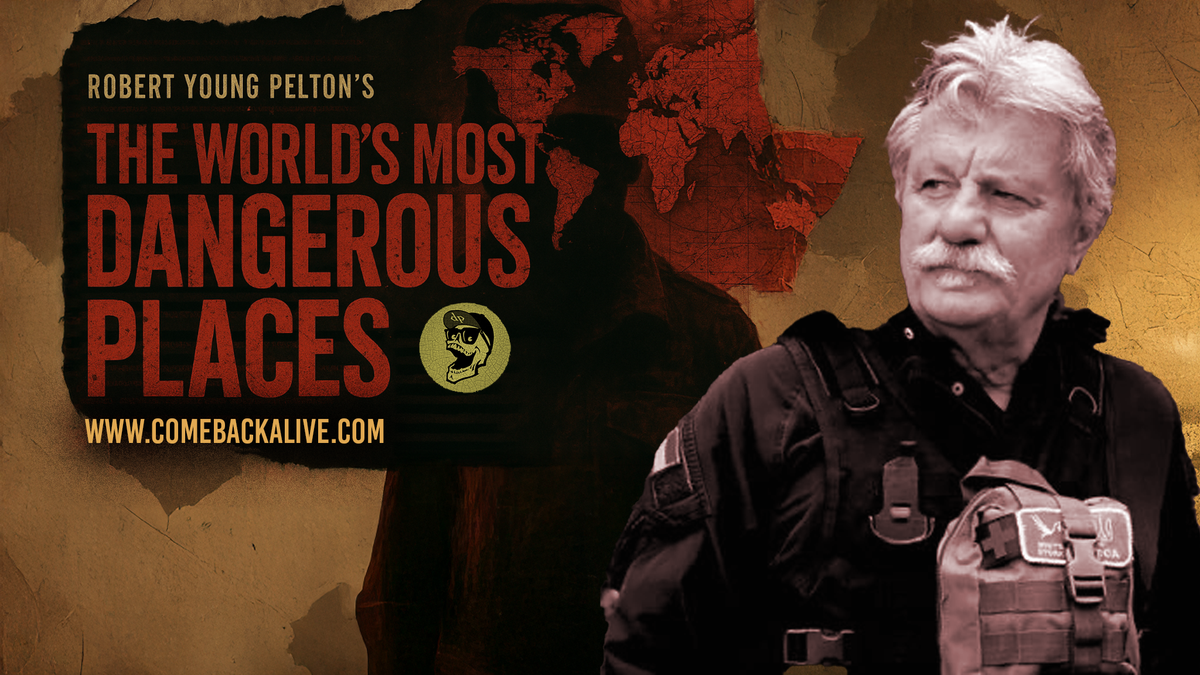
Down the Gambia
By Will Grant
In a remote corner of West Africa, the River Gambia remains one of the last major undammed rivers on the continent. Flowing from a small rivulet in the Guinean highlands, known as the Fouta Djallon, the river runs northwest and west for 733 miles to its mouth at the Atlantic Ocean—a six-mile-wide estuary of mangroves, sand bars, and braided streams.
In what may be the first source-to-sea descent of the river, Jason Florio, a New York-based photographer, and his wife, Helen Jones-Florio, have set out to witness and document the river in its entirety. With folding canoes and Pelican cases full of hardware, the two will spend the next three months on the river.
“I’m not an explorer or adventurer,” says Florio. “I’m really a photographer at heart. So this is kind of new territory for me.”
Rife with hippos, poachers, crocodiles, and a thousand unseen hazards, descending the River Gambia will be no walk in the park. Florio, who is far more comfortable shooting a camera than a rifle, does not seek out the dangerous side of life. Nor does he intentionally visit hostile environments—though he’s been shot at by a sniper in Somalia and trekked through warzones in Afghanistan. He knows this expedition will be long and difficult in many ways, but the hope is that this will be a trip without violent confrontation, armed rebel groups, or warring militias. To the Florios, it’s a river trip through a wild slice of Africa.
The first challenge will be finding the source of the river. To do that, they’re mostly relying on a book by Frenchman Gaspard Mollien, one of the earliest Europeans to explore West Africa in the nineteenth century. In 1820, Mollien published a book called Journey into the African Interior in which he documents finding the source of the River Gambia. That book, and a handful of maps from the Royal Geographical Society, where Florio is a fellow, is all he and his wife have to go on.
At the river’s source in the Fouta Djallon, the river is too narrow and shallow to float. The Florios will trek 150 to 200 kilometers downstream to their stashed canoes in Senegal where the river widens and deepens. From there, they’ll descend through scattered gold mining developments and fishing villages to Niokolo-Koba National Park, where the poachers are reputably as dangerous as the hippos.
“There’s a lot of poaching in the park,” he says, “but as long we don’t bother the poachers, we think they’ll leave us alone. That’s what we’re hoping, anyway.”
About half the river is considered navigable. With the folding boats, which the two tested between pubs on canals in rural England, they hope to be on the water a lot more than half the time. The two will rely heavily on prearranged guides, mostly local fisherman, to coordinate border crossings, necessary permits, and resupply points along the way.
The Florios have timed their expedition to coincide with the end of the rainy season when the flows will be high enough to paddle most of the river but the regular, monsoonal drenchings will have ended. As the river dries out, it becomes less friendly to paddlers.
“If the water gets too low,” Florio says, “the rocks will be bad and the hippos will congregate.”
As the saying goes, behind the mosquito, the hippopotamus is the most dangerous animal in Africa. In fact, hippos are responsible for killing more people than any other animal on the continent. Some people have told Florio that the hippos won’t be a problem—that people deal with them everyday without incident. Others have warned him that the animals can be aggressively territorial and to give any they encounter a wide berth.
“They reckon there are four to six thousand hippos on the river,” he says. “If the hippo situation becomes problematic, then we get out and portage. We might have to get out of the river at night.”
While descending the river at the end of the wet season seems like a good idea, the logistics of an expedition this size are sure to be fluid. The first change of plans was a three-week delay of the ship carrying their gear to Gambia. Their tentative launch date is now November 11.
The Florios are intent on travelling light. They’ll be eating a lot of local food, like fish from the river and millet bought at villages along the way. They’ve also packed Clif Bars, energy snacks, and several bundles of Ramen noodles (at $0.18 per pack, a super-cheap form of nourishment).
They’re paddling folding canoes made by Norway-based Ally Canoes. They’ll provide live tracking through a Yellowbrick tracking device. They’ll boil water for their Ramen noodles with stoves from Kelly Kettles. They’ll also be carrying an array of DPx Gear knives for both their own use and as gifts for the locals.
The hardware, though the heaviest part of their load, is arguably the most important. The cameras, solar chargers and laptop computers will allow the two to document the river and the people who rely on it for their livelihood. As they hunt for the river’s source, trek downstream, paddle their folding boats, and negotiate hundreds of miles of riverine wilderness, the Florios will maintain a blog of their journey, while also posting updates on their Facebook page.
But in the end, the expedition is about creating a document of the people and the river. Although it’s one of the last major undammed rivers in Africa, that could, and most likely will, change.
The Gambia, the country nicely bisected by the lower third of the river, is the smallest country in mainland Africa, with a population of 1.7 million. The river is the lifeline of the country and the livelihood of nearly all that live on its banks. But development is scarce. Bumpy negotiations between Gambia and Senegal have stood in the way most major projects.
Talk of damming the River Gambia has gone on for the last decade. In many ways, a dam is inevitable. And when the waterway is changed, the effects on the people who depend on it will be irrevocable.
Florio first traveled to the River Gambia in 1996 to document an ecotourism project. He returned in 2009 to produce “A Short Walk in the Gambian Bush—930 km African Odyssey,” which won first place at The International Photography Awards of 2010. During the 2009 expedition, Florio and his wife circumnavigated Gambia, the country, travelling up one bank and down the other.
“That trip felt like a warm-up for something bigger,” Florio says. “Now we want to meet the people, see if they know about the damming, see how it will affect them.”
The Florios expect to reach the river’s mouth sometime early next year. But the expedition could take longer than that—either due to logistical complications or interesting places to spend time. They don’t intend to hurry through this cultural and environmental cross section of West Africa. But they have little idea of what lies in store for them.
“This is one of the biggest things we’ve tackled in terms of logistics,” Florio says. “There are a lot of question marks. But at the end of the day, I think you just have to get there and let the pieces fall into place.”
As the Florios make their way to river’s headwaters and begin their downstream journey, we’ll be keeping tabs on their progress. Check back here for the latest dispatches.
All images copyright Jason Florio.
Leave a comment
Comments will be approved before showing up.
Also in News

Beyond Black Ops: Ric Prado’s Life and Untold Stories of Espionage
Robert Young Pelton sits down with Enrique “Ric” Prado, a decorated CIA officer whose covert work shaped decades of U.S. paramilitary operations. Known for his leadership in the Contra War, counterterrorism missions, and the development of modern “find, fix, finish” kill teams, Prado’s life reads like a spy thriller. Pelton and Prado share a mutual friend, CIA legend Billy Waugh, who goes beyond what was allowed in his best-selling book and takes the audience into uncharted, dangerous, and never-before-discussed territory.

The World's Most Dangerous Podcast is Here
When Reza Allahbakshi, a survival instructor and journalist, first picked up a battered used copy of The World’s Most Dangerous Places, he didn’t expect the man behind it to be so complex. Pelton, the author in question, isn’t just a writer — he’s a lumberjack, marketer, blaster’s assistant, television host, and, most notably, a relentless and fearless explorer of the globe’s most volatile zones.
In this rich and often philosophical conversation, Pelton pulls back the curtain on his origins.

DPx Gear Releases the DPx HEST/F 4.0 Ti
It is a rare moment when a product, a designer, and a legacy blend into one perfect moment. Robert Young Pelton has been working and living in the bush, war zones, and dangerous places since he was ten. He designed his first knife in 2008, and 17 years and over two dozen patents later, he is still perfecting the Hostile Environment Survival Tool—a proven design that is beautiful, ergonomic, dependable, and functional. In that obsession lies an ancient concept of elegance, form, and function, designed to be used roughly and to age with grace. This is a perfection of that vision.





